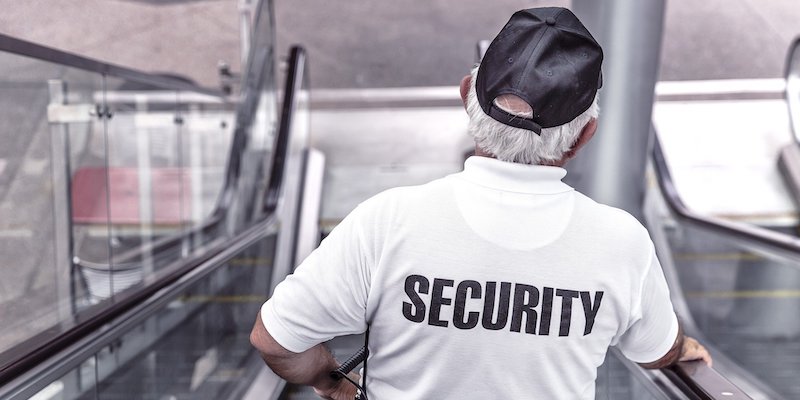Following George Floyd’s killing in late May, the Minneapolis school board voted unanimously to terminate its contract with the city’s Police Department. Citing a misalignment between police officers’ recent actions and the district’s goals to combat institutional racism, the district then undertook a hiring process meant to prioritize candidates with experience building positive relationships with young people.
The decision was a watershed moment for groups that oppose police presence in schools. But now, it turns out that more than half of the hires for Minneapolis’ new “public safety support specialist” roles have past experience as police, security, or corrections officers. One finalist who was ultimately not hired for the job reportedly commented, “It’s almost like they wanted police officers, but technically not police officers.”
The news raises questions among those who supported the district’s original decision to cut ties with the police in order to ensure that Black students, along with all others, feel safe on Minneapolis school campuses. Was the contract cancellation in June nothing more than a superficial move in response to a political moment?
Regardless of the district’s true intent, real change won’t come from a simple resource swap. Minneapolis faces a predictable conundrum: despite the appeal of trading police for new, perhaps “better” hires, on its own the district’s move won’t transform students’ experiences of discipline and safety.
When replacing amounts to replicating
An example from outside of education drives this point home. In the late 19th century, factories were organized to optimize access to mechanical power. At the center of the factory was a large steam engine that drove the machinery, so the machines that required the most power were placed closest to it.
As electrification swept the industrial world in the early 20th century, factory managers started replacing their large steam engines with large electric motors that were less noisy and didn’t produce smoke. Although on that front the new technology was “better” than its predecessor, it had basically zero effect on factory output.
Productivity gains didn’t come until three decades after electrification, when managers finally redesigned their factory layouts. Instead of clustering equipment around a large central motor, they began putting smaller motors in individual pieces of equipment and then organizing it all based on the natural flow of production. With these changes, factory productivity grew to two to three times what it had previously been.
If Minneapolis simply swaps out school resource officers with new specialists, that’s comparable to just replacing a centralized steam engine with a centralized electric motor. Even if those specialists have experience building positive relationships with youth and relate to students differently than a police officer would, they’re unlikely to change much about the disciplinary system as a whole.
Furthermore, if the district had succeeded in hiring new specialists with a very different set of skills, the new hires may even have underperformed on some kinds of tasks (like breaking up fights) that came easily to school resource officers. Since the job description for the new roles was largely unchanged from when police officers occupied those roles, it’s unsurprising that the district sought out new hires with a background in policing. Factory managers faced the same predicament: after all, when factories still powered everything from a centralized location, new electric motors actually broke down more often than steam engines had.
Of course, as the story goes, electric power did ultimately win out in factories. But it required rethinking the layout of the entire factory, and the power source for each machine, to do so. That’s because new resources rarely produce radically different results without new processes that put them to work. Along the same vein, hiring new staff in place of police officers will have a much greater impact on students’ experiences if schools fundamentally rethink their approach to discipline and safety. Instead of relying on a handful of officers or specialists, schools should consider a new approach that casts all adults and young people as key components to creating a positive and safe learning environment.
A whole-school approach to rethinking discipline
Late last year, I visited a school that helped me see what such an approach might look like. Lakeridge Elementary, in the southern reaches of Seattle, serves a racially and ethnically diverse, multi-lingual, and low-income community. For the last eight years, the school has worked with Washington-based nonprofit Sound Discipline to build a school culture based in social-emotional well-being, and a Positive Discipline approach that focuses students and adults on solving problems rather than punishing.
My visit to the school made it clear that at Lakeridge, discipline isn’t just the responsibility of security personnel or counselors; it involves work that’s shared by students, parents, teachers, and staff. It’s practiced constantly: in classrooms, hallways, and the lunchroom, not just in behavioral intervention rooms when counselors get involved. Students as young as kindergarteners begin learning about the emotional workings of the brain, and master a set of hand signals and new vocabulary that help them communicate about their emotions. Teachers are trained in trauma-informed instruction, and facilitate class meetings focused on building strong relationships, practicing social-emotional skills, and solving real problems that arise in the classroom.
And what about when behavior gets out of hand? The school does employ counselors and behavioral specialists. But in one of the more impactful moments of my visit, the assistant principal noted: “Before [investing in this approach], we’d see teachers calling for backup as early as 8:30am, saying ‘I can’t deal with this kid anymore; can you get him out of my room?’ Now, teachers call to ask, ‘Can someone come supervise my class for 15 minutes while I take a walk with this student and heal our relationship?’”
Lakeridge is part of a larger movement to rethink discipline, with a history that stretches long before this year’s spotlight on racial justice and policing. For current examples of this movement in action, school leaders can consult the Canopy project, which recently released updated data about 144 innovative schools across the country. This data surfaced 99 schools that report working towards a culture of restorative practice (an alternative approach to discipline that focuses on problem-solving and relationships), and 21 that report this approach as “core” to the school’s model. The vast majority of schools in the Canopy also report a focus on social-emotional learning this year.
Like factory managers learned that electric motors could only boost productivity when they were installed in individual machines, school leaders spearheading a new approach to discipline must recognize that it has to be owned and practiced by everyone in the school. That means going far beyond swapping in new people in old roles to get safer schools.


